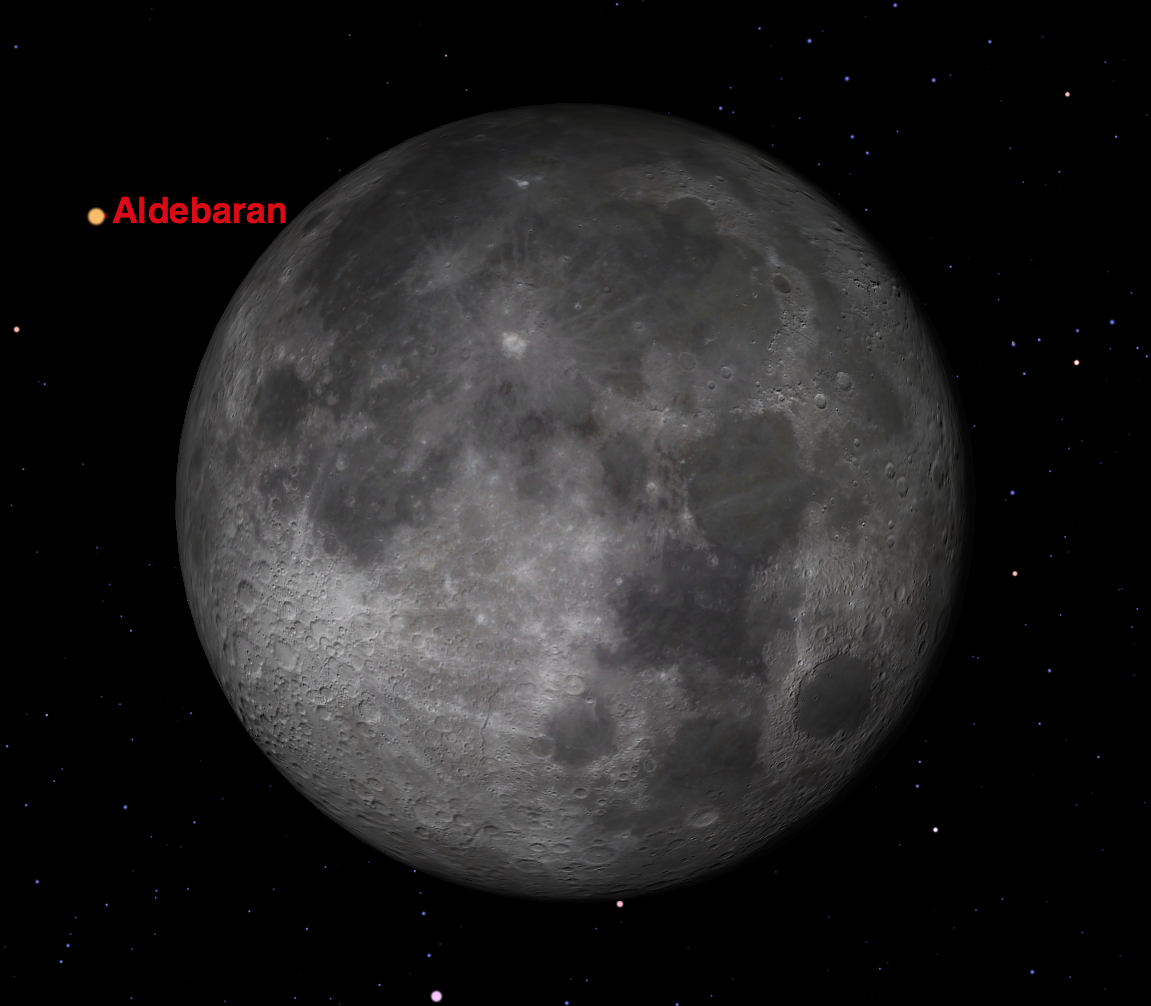The Thanksgiving Sky: The Moon Meets a Bright Star at Dawn

As the moon moves around the Earth in its monthly orbit, it often passes in front of background stars. Such events are called "lunar occultations" and one will happen Thursday at dawn in a Thanksgiving lunar treat.
The path the moon follows varies a bit from month to month because its orbit is not exactly over the Earth's equator. Because of this, there is quite a long list of objects the moon can occult. This includes a number of bright stars, and, of course, all of the planets.
On Thursday morning (Nov. 26), the moon will occult one of the brightest red giant stars in the sky, the star Aldebaran in Taurus. [Lunar Tips: How to Observe the Moon]
Because the moon has no significant atmosphere, there will be no dimming of Aldebaran as its occulted: it simply winks out as if a switch was turned. The only exception is in a grazing occultation, when the moon just covers a star. Sometimes the star will peek out once or twice as it passes behind a valley right onthe edge of the moon.
The exact time of the occultation will depend on your location. A planetarium program like Starry Night will give you the time for your location.
For example, from New York City, the star will disappear at 5:47 a.m. EST; the moon will have set by the time Aldebaran reappears. In Seattle, the star will vanish at exactly 2 a.m. PST, and reappear 53 minutes later. For locations in the southern United States, the moon will miss Aldebaran completely. [How to Photograph the Moon Through a Telescope]
These differences occur for two reasons.
Get the Space.com Newsletter
Breaking space news, the latest updates on rocket launches, skywatching events and more!
First, different parts of the country are on different time zones. More important is that the moon's location in the sky varies depending on your location because the moon is much closer to us than the stars or planets, so every location on Earth sees it from a different perspective. The background stars don't change, but the moon's position in front of them does.
Don't feel you have to stay up late (or rise super early) to see a lunar occultation. Aldebaran is located right in front of the Hyades star cluster, so that wherever you are and whatever time you look tonight, the chances are good that you will see one or more of the hundreds of stars in the Hyades being occulted by the moon.
Editor's note: If you snap a great picture of the moon and Aldebaran, or any other night sky view, and would like to share it with Space.com and its news partners for a possible story or gallery, send images and comments to managing editor Tariq Malik at: spacephotos@space.com.
This article was provided by Simulation Curriculum, the leader in space science curriculum solutions and the makers of Starry Night and SkySafari. Follow Starry Night on Twitter @StarryNightEdu. Follow us @Spacedotcom, Facebookand Google+. Original article on Space.com.
Join our Space Forums to keep talking space on the latest missions, night sky and more! And if you have a news tip, correction or comment, let us know at: community@space.com.

Geoff Gaherty was Space.com's Night Sky columnist and in partnership with Starry Night software and a dedicated amateur astronomer who sought to share the wonders of the night sky with the world. Based in Canada, Geoff studied mathematics and physics at McGill University and earned a Ph.D. in anthropology from the University of Toronto, all while pursuing a passion for the night sky and serving as an astronomy communicator. He credited a partial solar eclipse observed in 1946 (at age 5) and his 1957 sighting of the Comet Arend-Roland as a teenager for sparking his interest in amateur astronomy. In 2008, Geoff won the Chant Medal from the Royal Astronomical Society of Canada, an award given to a Canadian amateur astronomer in recognition of their lifetime achievements. Sadly, Geoff passed away July 7, 2016 due to complications from a kidney transplant, but his legacy continues at Starry Night.
